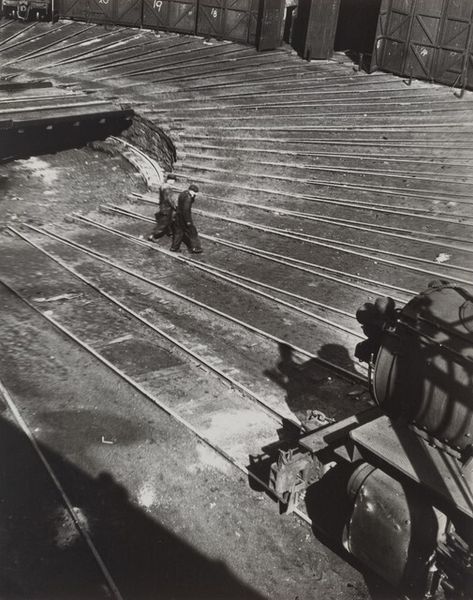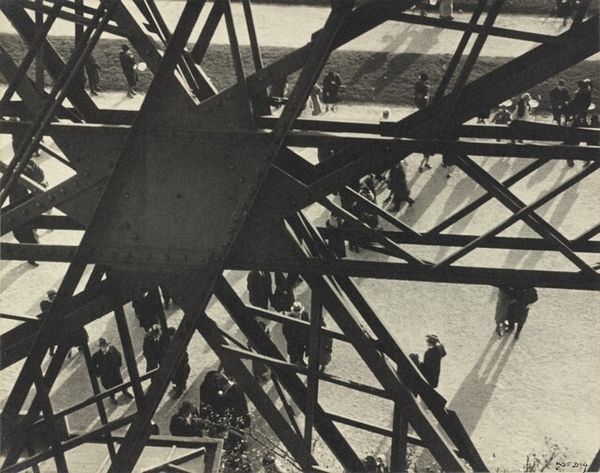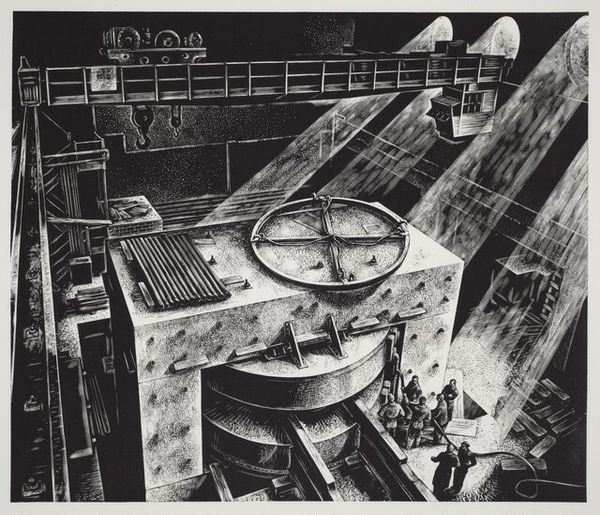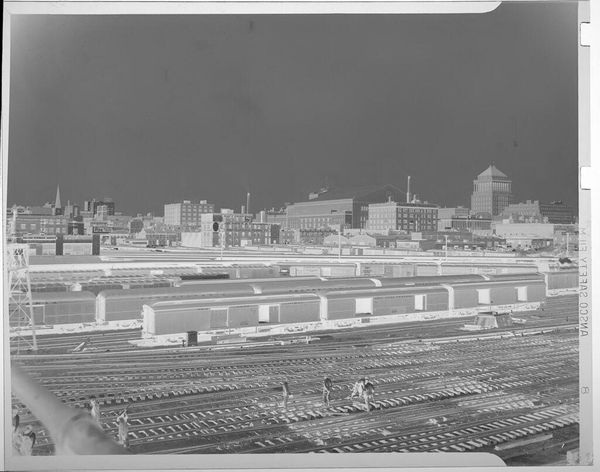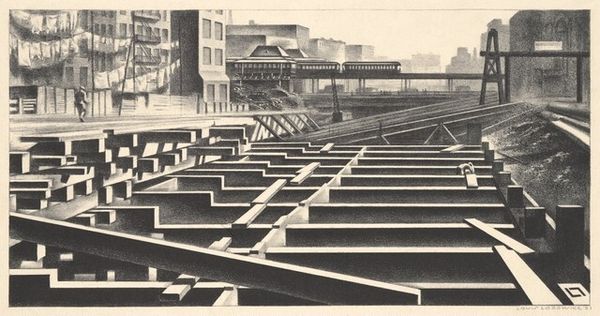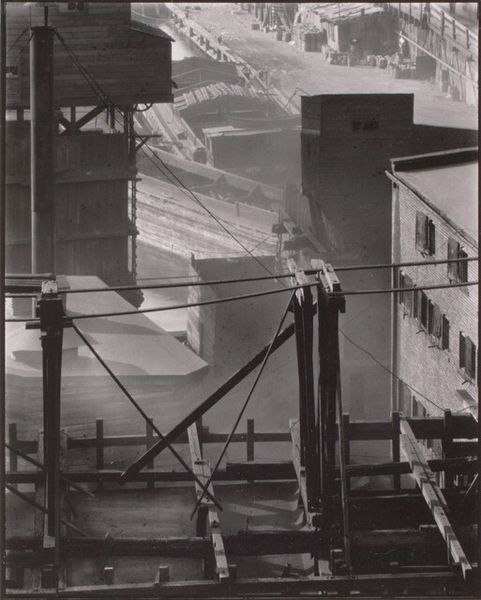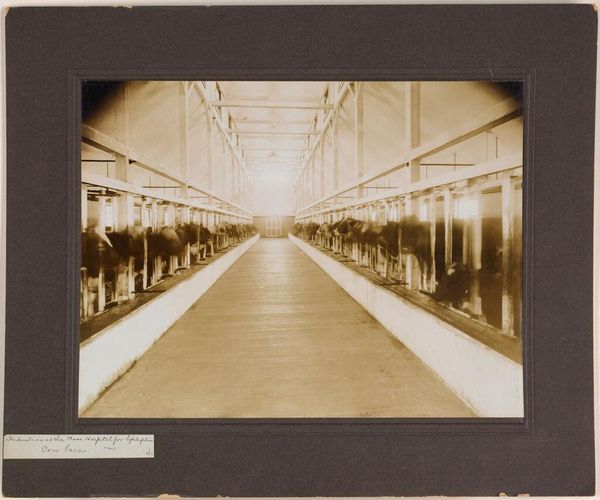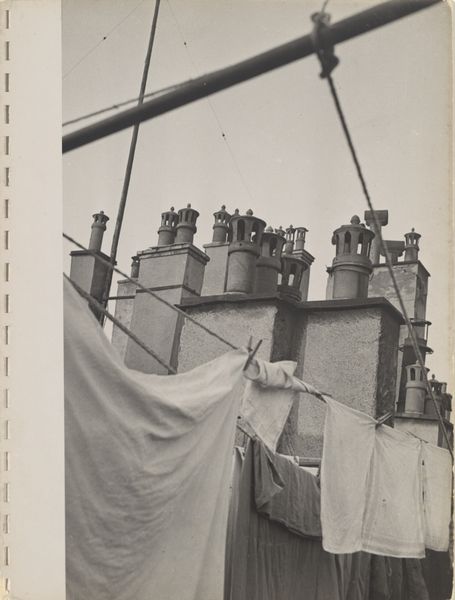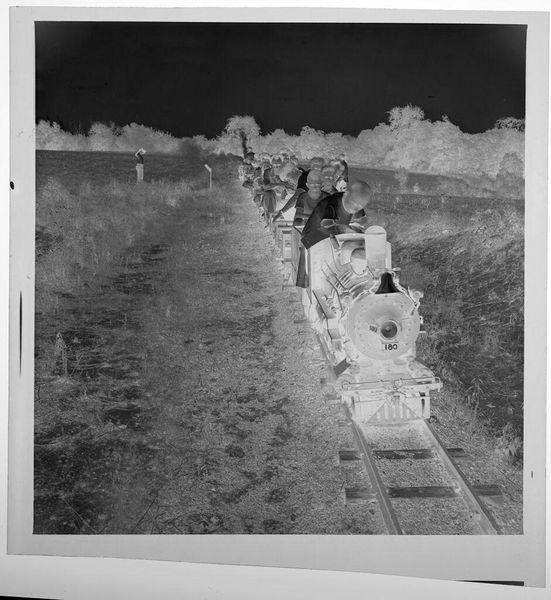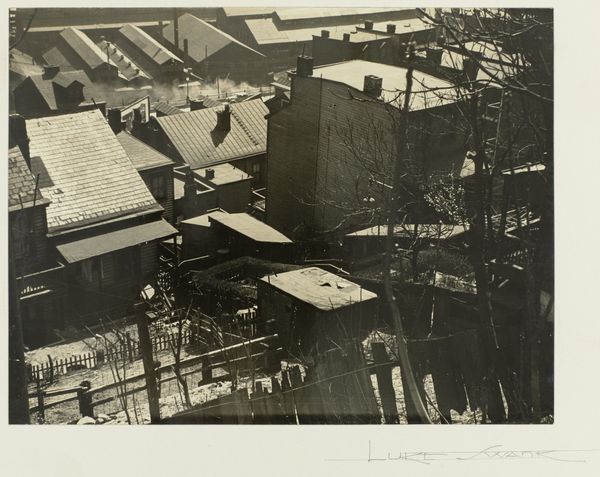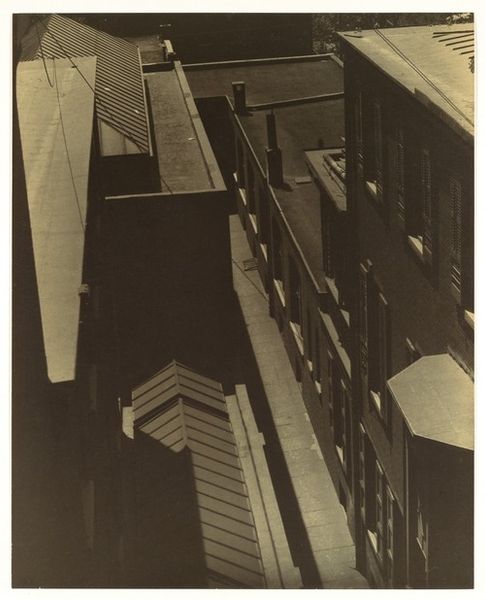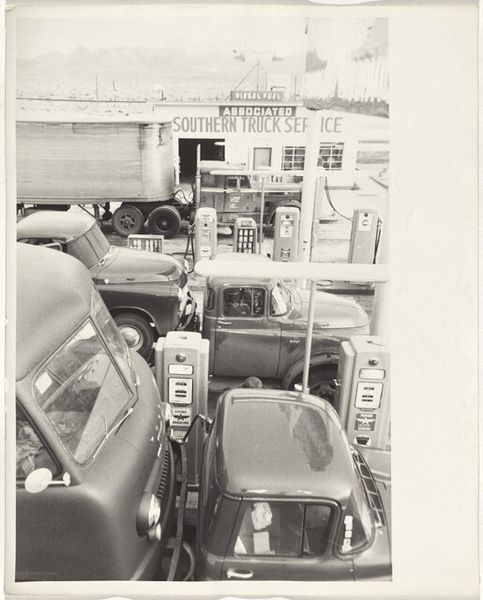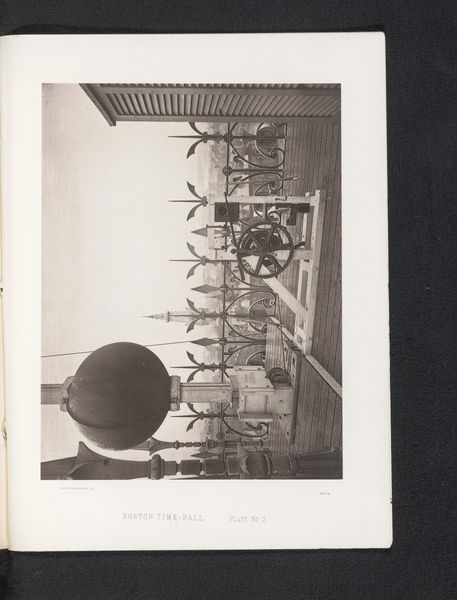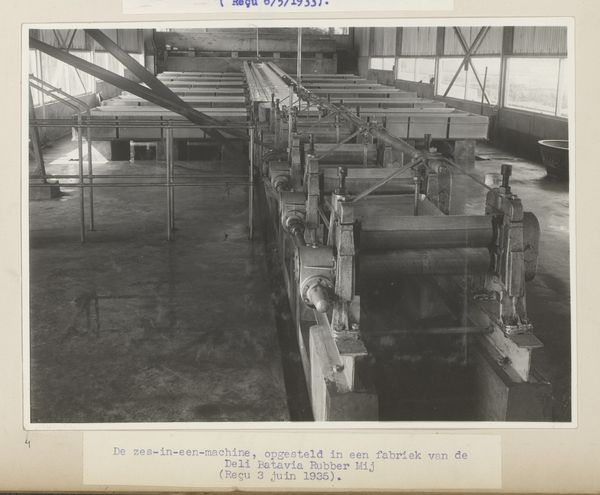
Untitled (Documentation of Harvest for Andersen & Co) c. 1939 - 1940
0:00
0:00
photography
#
still-life-photography
#
black and white photography
#
black and white format
#
photography
#
process-art
#
black and white
#
monochrome photography
#
monochrome
#
realism
#
monochrome
Copyright: Public Domain
Curator: Welcome. We're looking at an untitled photograph by Karl Theodor Gremmler, dating from around 1939 or 1940. It's held here at the Städel Museum and subtitled 'Documentation of Harvest for Andersen & Co.' Editor: My immediate sense is of orderly abundance. The rhythmic repetition of those dark spheres tumbling down the conveyor, the stark monochrome...it feels both industrial and strangely organic. Curator: Absolutely. It's a fascinating document of labor and processing. Consider the historical context—pre-war Germany. This image isn't just about aesthetics; it's about the means of production, likely food production. The documentation aspect speaks to the importance of efficiency and scale in that era. Editor: I agree. But those spheres, whatever fruit or vegetable they are, evoke potent symbols too. Roundness representing cyclical time, the bounty of nature harnessed, or even fertility and abundance...the subconscious mind teems with archetypes. And that relentless onward movement suggests the inexorable march of time and progress, a powerful cultural symbol. Curator: True. The endless conveyor speaks to modernity's emphasis on continuous operation, efficient handling of raw materials, and the minimization of wasted resources. What can you extract as usable from harvest...nothing to be left to spoil or rot. I wonder about the workforce employed for such harvest and materials handling during this era. Editor: Indeed. And even that relentless movement down the conveyor echoes the journey through life itself. Perhaps that harvest itself represents the sum total of work done. And the contrast, the dark fruits against the light mechanism could signify the complex tension between the earth's offerings and the structures imposed by man. Curator: The black and white choice is interesting too. We are deprived of hue that would inform what Andersen & Co. were handling. The processing system must then convey something, or perhaps reveal little at all. Was this approach also a choice to create some emotional neutrality, hiding, rather than showing its true work. Editor: It is truly amazing how an object as functional as harvest moves itself, the image speaks more powerfully. It resonates and encourages one to pause and consider themes and symbolism of culture, productivity, and our continuous place within it. Curator: Indeed. It demonstrates how photography of that time worked to reveal, inform, and equally conceal its own meanings from future scrutiny.
Comments
stadelmuseum about 2 years ago
⋮
Karl Theodor Gremmler belonged to the generation that embarked on their careers after the National Socialist accession to power. He specialized in photos of industrial food production. His customers included the biscuit manufacturer Bahlsen, “Kaffee HAG”, and above all the Hochseefischerei- Gesellschaft Hamburg, Andersen & Co. K. G. Gremmler photographed the products’ entire process chain from the harvest or catch to the packaging. The photo book Men at the Net, published in 1939 on his own initiative, is a detailed portrayal of navigation and fishing. With the aid of harsh shadows, oblique perspectives, and views from below, his scenes of workers in heroic poses were meant to convey the progressiveness of the German food industry. The design principles served the purposes of Nazi propaganda, which generously sponsored advertising measures of this kind.
Join the conversation
Join millions of artists and users on Artera today and experience the ultimate creative platform.
